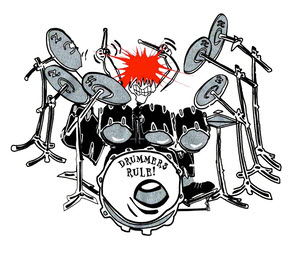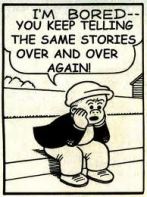
7 Things to Consider When Buying Cymbals
Choosing ride cymbals is very important for drummers. I’ve noticed that many young drummers who ask me about certain ride cymbals are usually not taking into consideration the music they will be playing. The sound you get from the cymbals and drums is very important and it mainly depends on your touch, but choosing the right equipment is the first step in giving yourself the best instrument to work with.
Many young drummers who are just starting out are not aware how essential it is to use the appropriate cymbal. Overall, cymbals tend to be loud to begin with, especially if they are not played with a mature touch. I find it harder to find a cymbal that has a nice sound and doesn’t get too loud as I play it than a cymbal that isn’t loud enough. I generally use relatively dark rides when playing acoustic jazz and rides that are a bit brighter when playing electric jazz. When I play with acoustic instrumentalist in a  small room or club setting, I find that the lightest flat rides gave me the airy sound needed to blend with and not overpower the other players.
small room or club setting, I find that the lightest flat rides gave me the airy sound needed to blend with and not overpower the other players.
If you have at least a few different ride cymbals and additional cymbals sounds (crashes, splashes, etc.), you can make choices depending on the musical situations you find yourself in.
Do not settle for what everyone else thinks is the best. listen for yourself, and make your own mind up. There is nothing wrong with taking suggestions, but people have their own preferences and favorites. It all comes down to what your ears say they like. try matching cymbals with other cymbals by ear.
Below are Seven (7) things to consider when buying cymbals:
1. Cymbal Types The main types of cymbals are hi-hats, rides, and crashes. Experts recommend you buy them in that order as you can more blend the other cymbals more easily with your hi-hat once you’ve chosen it. These will be used for the core of your play, but you can also add special effects cymbals, such as Splash or Chinese cymbals, for accent sounds.
2. Size Through the various types of cymbals, you can find ones that are anywhere from 4″ to 30″. And size matters. Smaller cymbals are quieter, they respond quicker and have less sustain. Their sound is tighter and higher in pitch. Larger cymbals are lower pitched and have a slower response; they’re also are louder, have a bigger sound and a longer sustain.
3. Cast or Sheet? Generally considered a “superior” cymbal, Cast cymbals are individually crafted from raw, molten metal. Once poured, they’re rolled, shaped, hammered and lathed. The lengthy process results in a full, complex sound favored by experts and professionals. Because of its individual creation, each Cast cymbal has its own unique sonic makeup, which many say improves with age.
Sheet cymbals are cut from large sheets of metal. As a result, they’re less expensive — but that doesn’t always translate to poorer quality. Sheet cymbals are uniform in thickness and composition, resulting in a more uniform sound from all the cymbals within the same model. They can crack more easily if heavily played.

7 things to consider when buying cymbals
4. Alloy Variations All cymbals are a bronze variation of tin and copper. The most basic, and many starter cymbals, is the B8 (made of 8 percent tin and 92 percent copper). It produces a bright albeit almost brittle sound. At the other end, a B20 bronze is found (20 percent tin, 80 percent copper), which has a warmer and more musical quality. In between the two, you can also find B10, B12 and B15 bronzes.
5. Softer Play Playing jazz and other acoustic music is done with a lighter touch, from sticks or brushes. Volume isn’t as important as obtaining the darker and more complex sounds that thinner and lighter cymbals offer. If aiming for jazz play, focus on getting a good ride and set of hi-hats first. The ride should be medium thin to thin and around 20″ to 24″. A starter set of thin hi-hats should be 14″ or 15″ in diameter.
6. Heavy Play Rock or heavy metal drummers hit harder, so durability is more important. You’ll want a brighter, louder sound that cuts through the mix and can get it through a variety of hi-hats, rides and crashes. Go for medium to heavy cymbals that are quite thick — these will have a higher pitch and vibrate less.
7. Test Them Out Head to a store if possible to bang a few cymbals before buying them. Take your own sticks, and hit the cymbal with a glancing blow, from one side to the other. Not straight on or on an edge. And hit them as you would when you play, not just with a light touch. Try them in different areas of the store if you can, because the surroundings will have an effect on the sound. Another idea is to go to Zildjian.com, where you can listen to the sound of each cymbal. Note, the exact sound may vary, but it will give you a good idea when looking for the sound you want.



 Unfortunately, at times, some students become preoccupied with learning “Impressive Patterns or Solos” to the point that they neglect to practice the actual lesson. Remember, these “Impressive Patterns/ Solos” that are here today and gone tomorrow, will do you absolutely no good, unless you have taken the time and effort to develop the tools essential to excellent drumming technique. Whether you are beginning an entry level of instruction, intermediate level, or advanced level, my goal is to provide instruction that will help you develop as a “well-rounded” better performer. Below are a few “HABIT” tips to assist you as a drummer, enjoy!!
Unfortunately, at times, some students become preoccupied with learning “Impressive Patterns or Solos” to the point that they neglect to practice the actual lesson. Remember, these “Impressive Patterns/ Solos” that are here today and gone tomorrow, will do you absolutely no good, unless you have taken the time and effort to develop the tools essential to excellent drumming technique. Whether you are beginning an entry level of instruction, intermediate level, or advanced level, my goal is to provide instruction that will help you develop as a “well-rounded” better performer. Below are a few “HABIT” tips to assist you as a drummer, enjoy!!

 small room or club setting, I find that the lightest flat rides gave me the airy sound needed to blend with and not overpower the other players.
small room or club setting, I find that the lightest flat rides gave me the airy sound needed to blend with and not overpower the other players.

